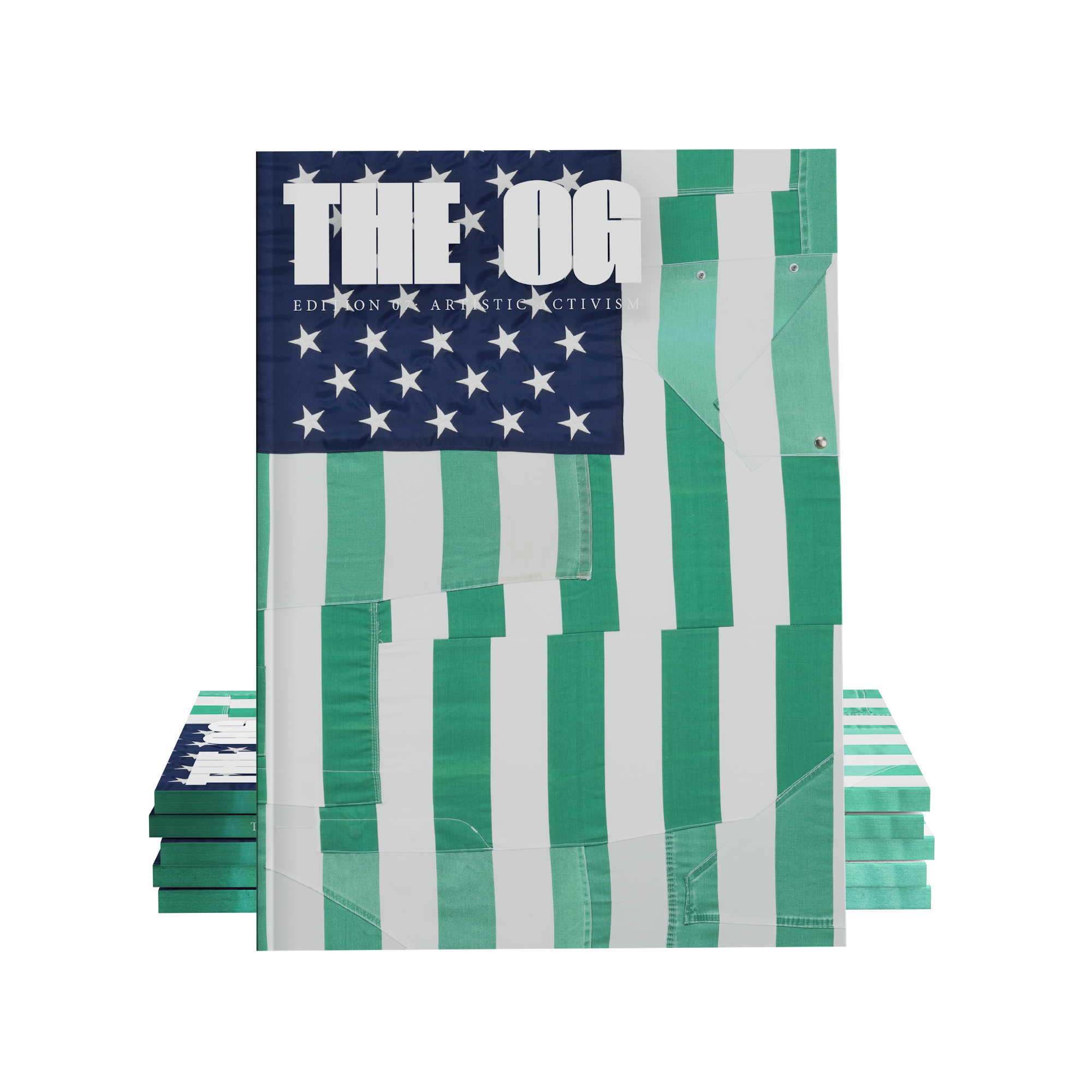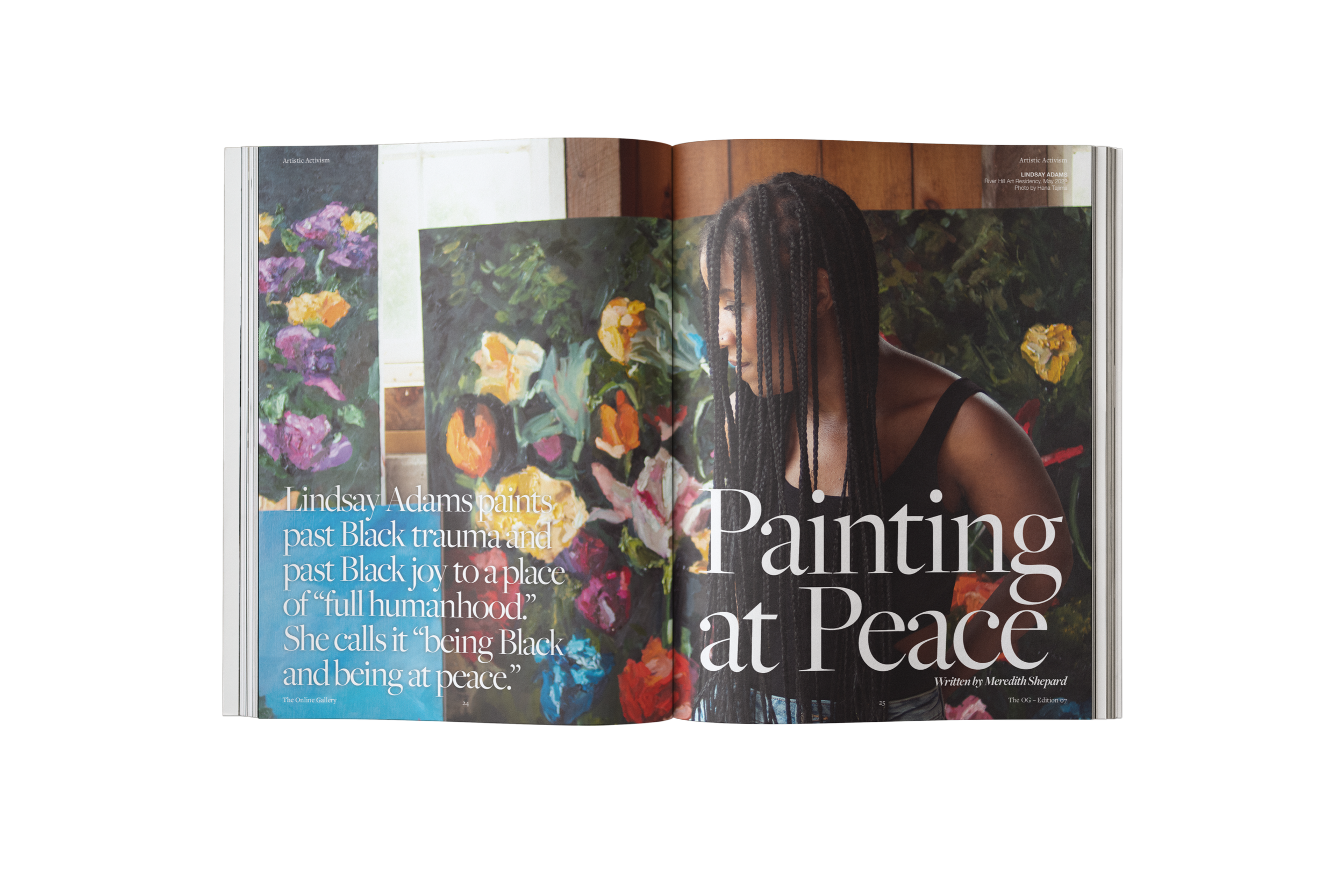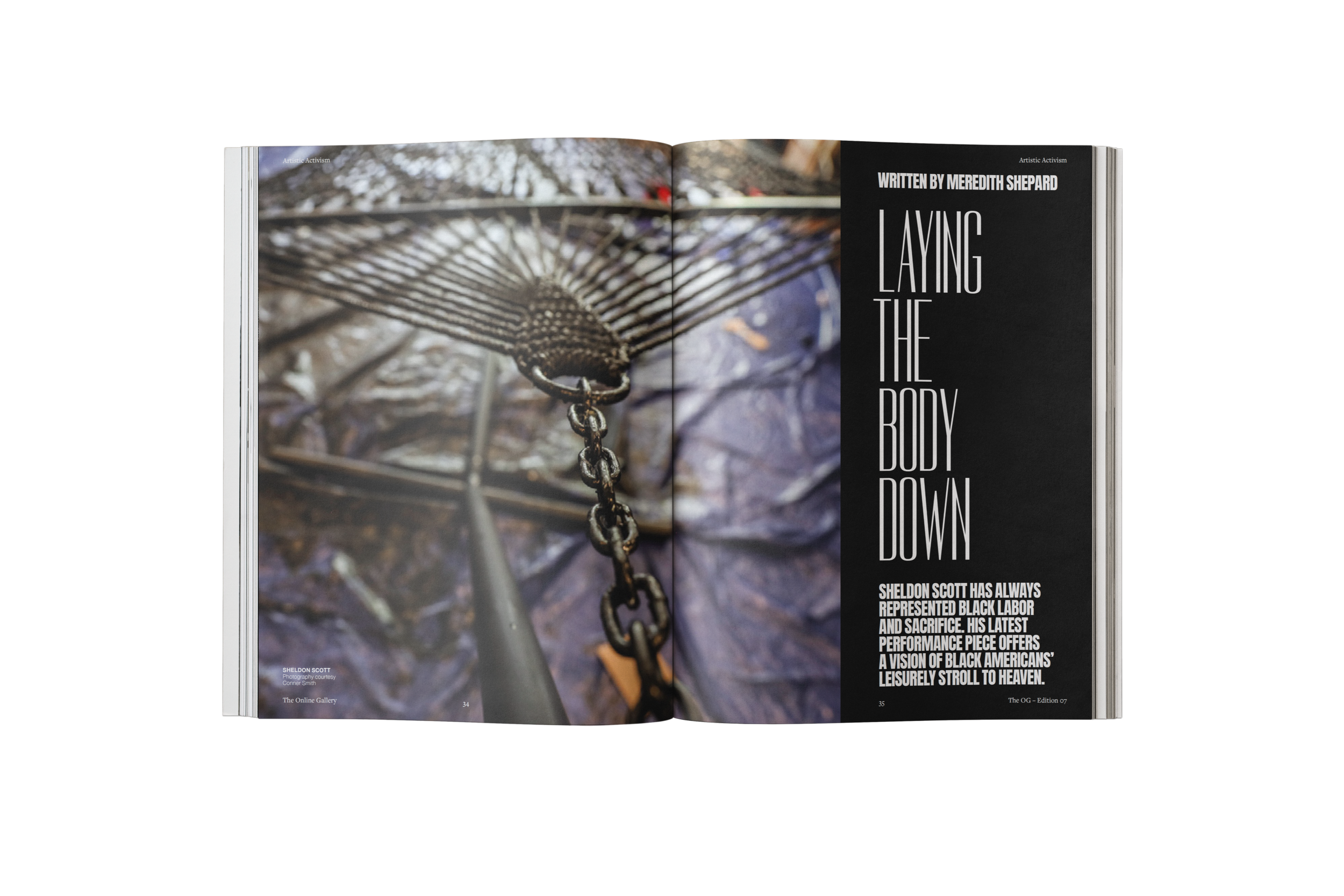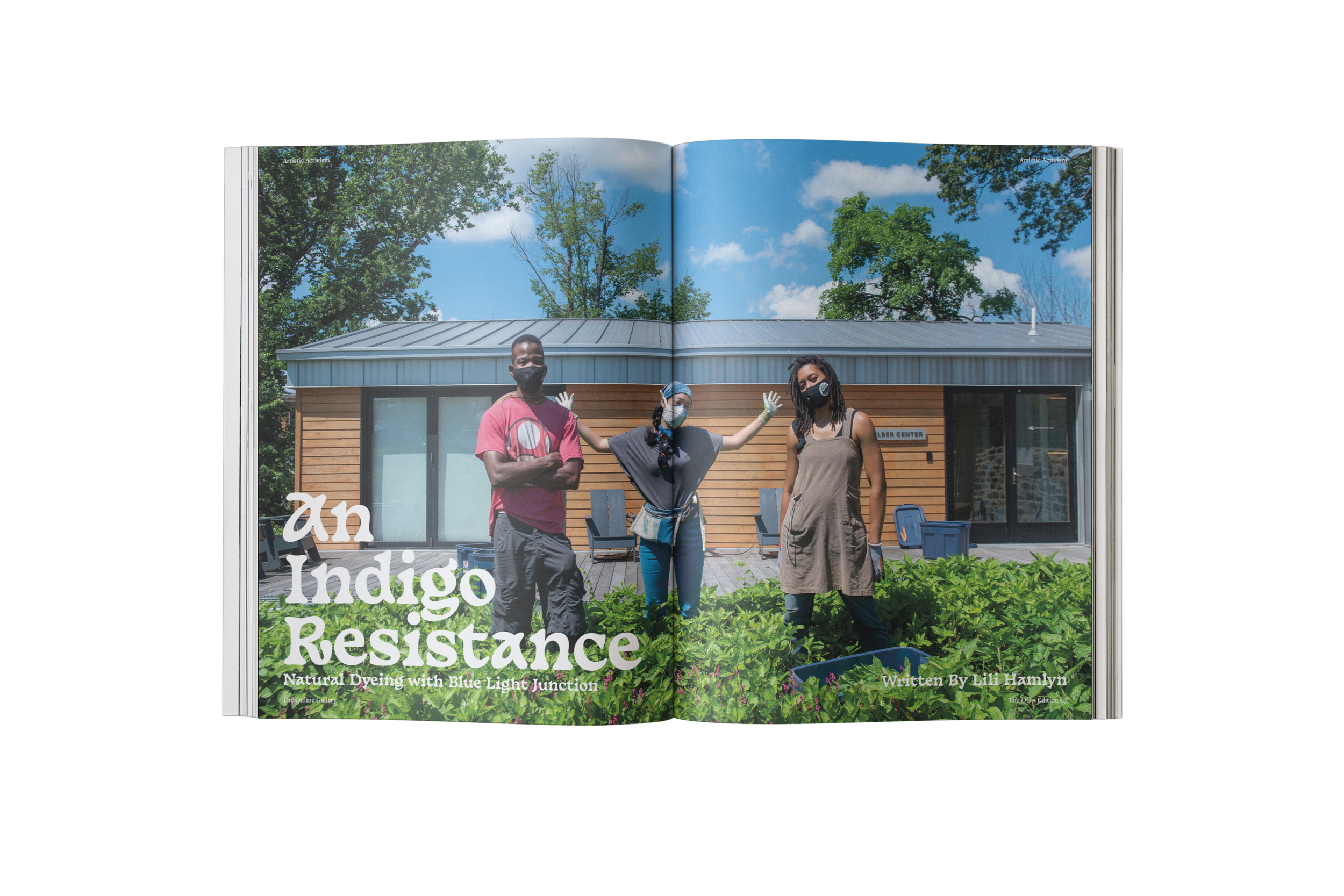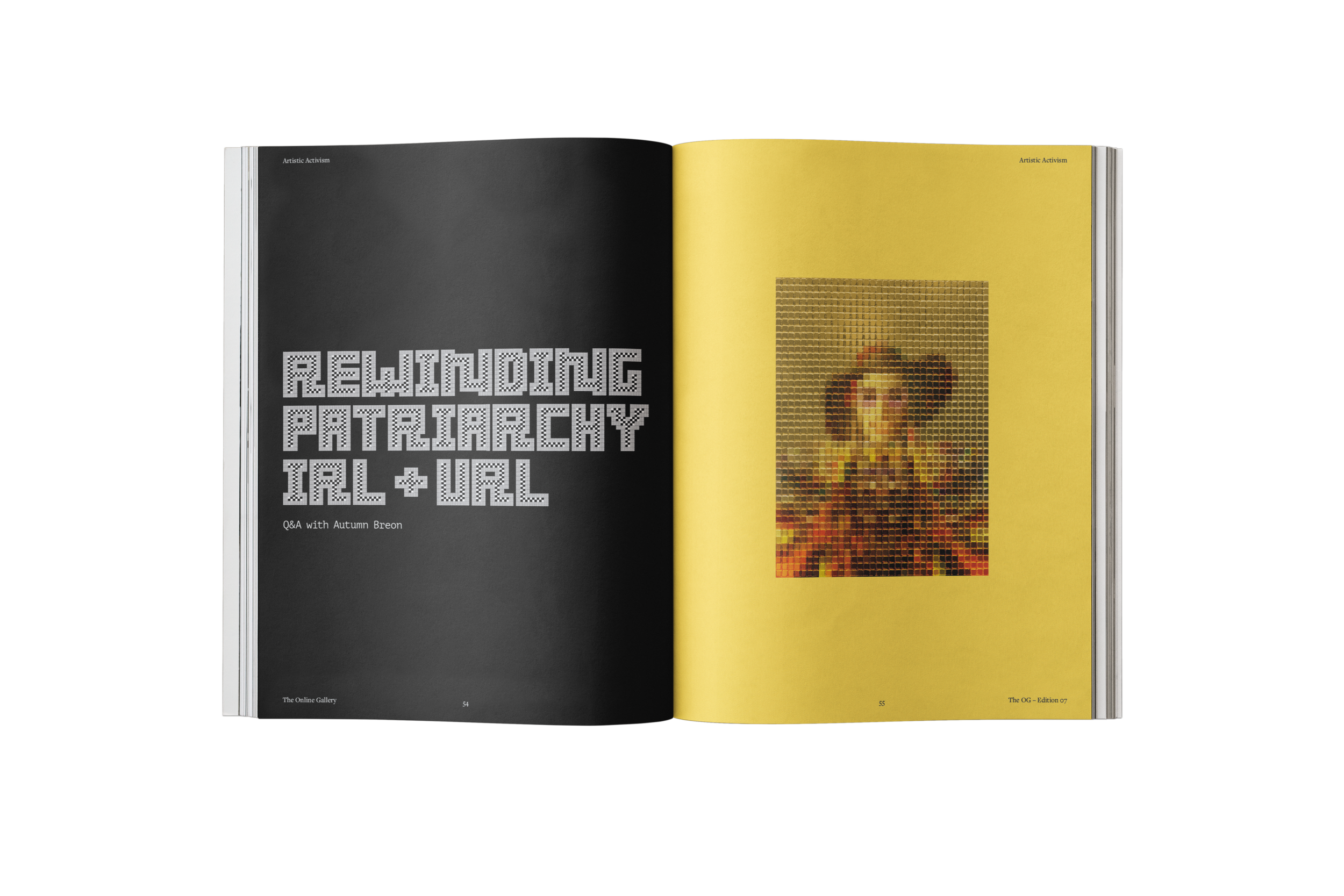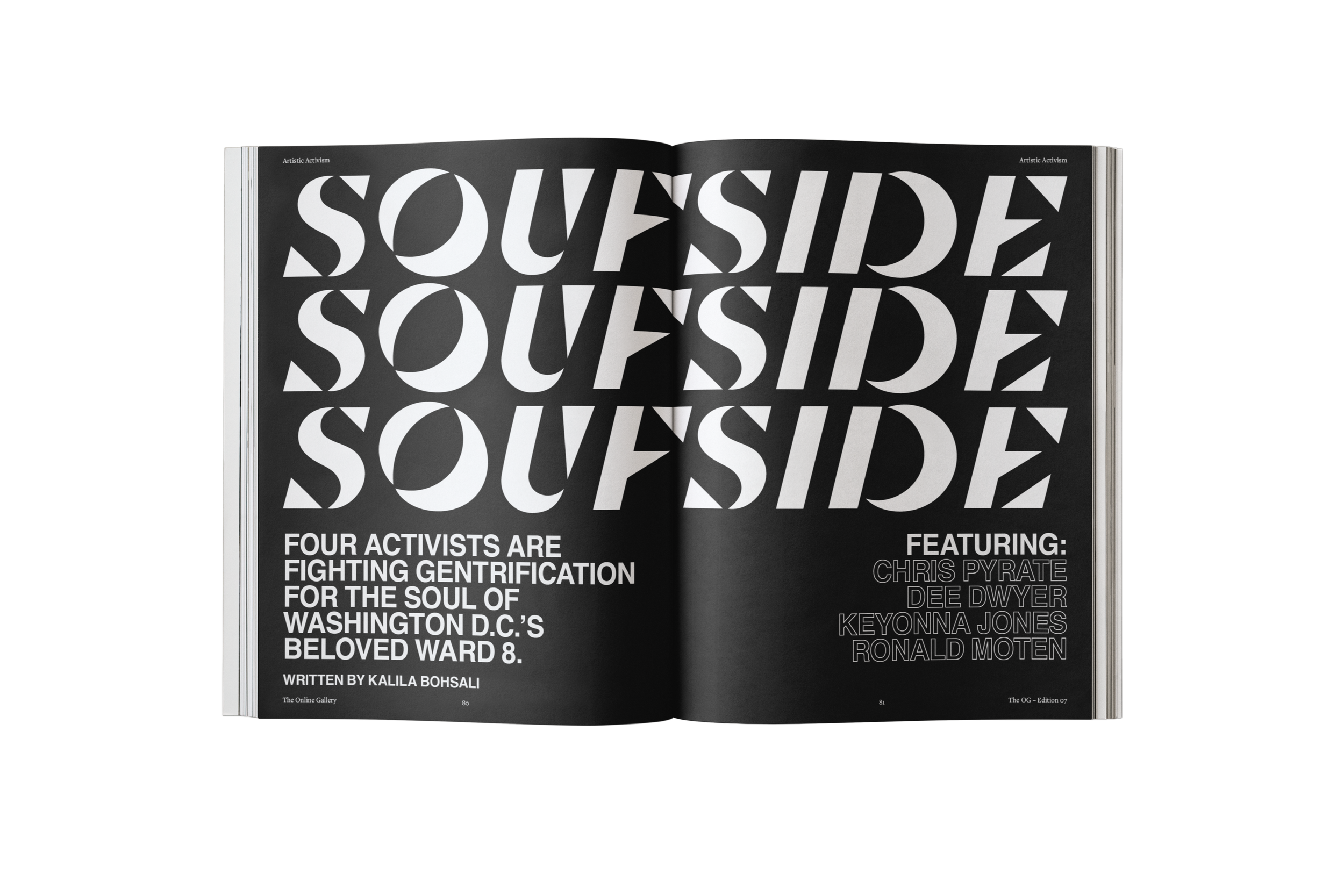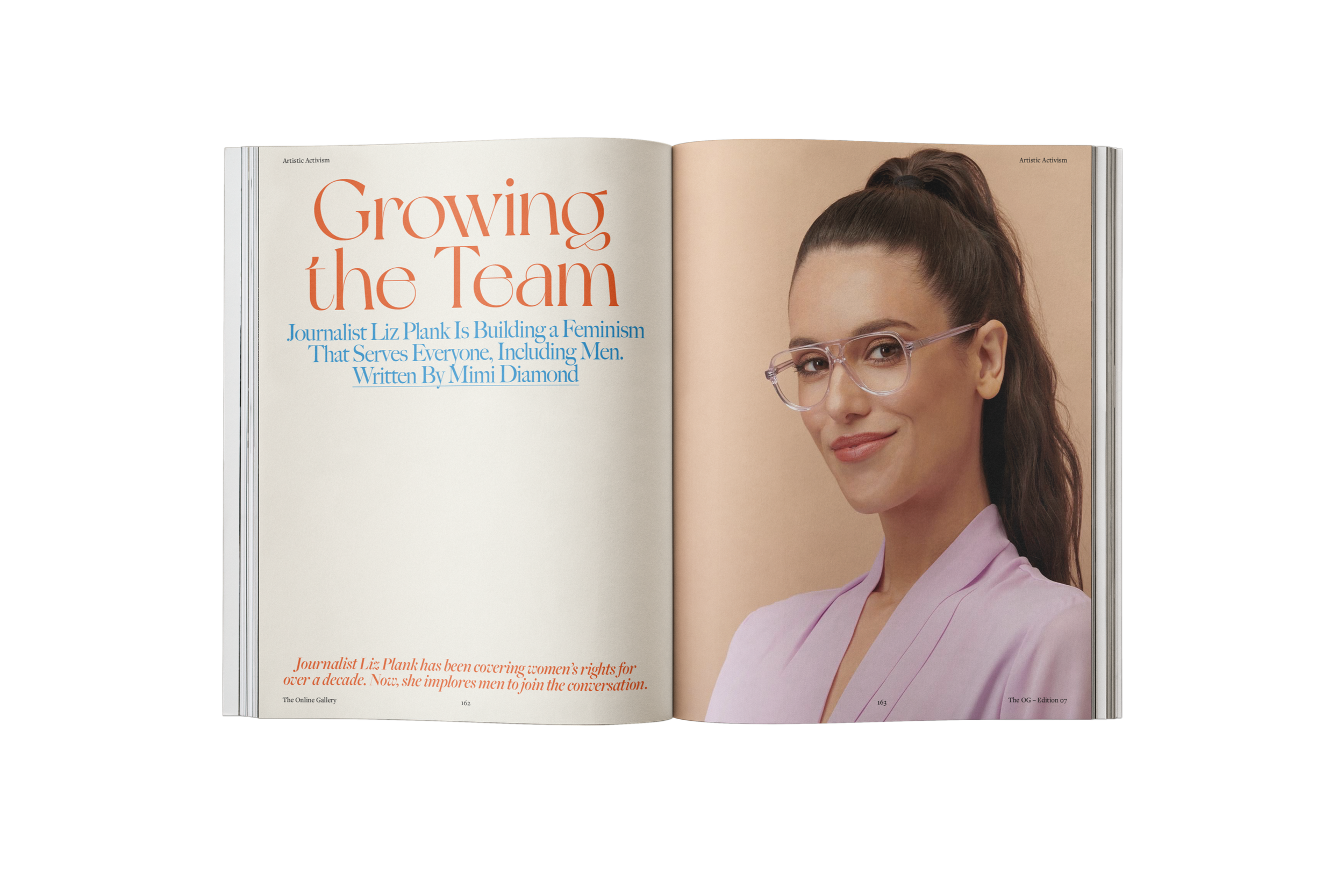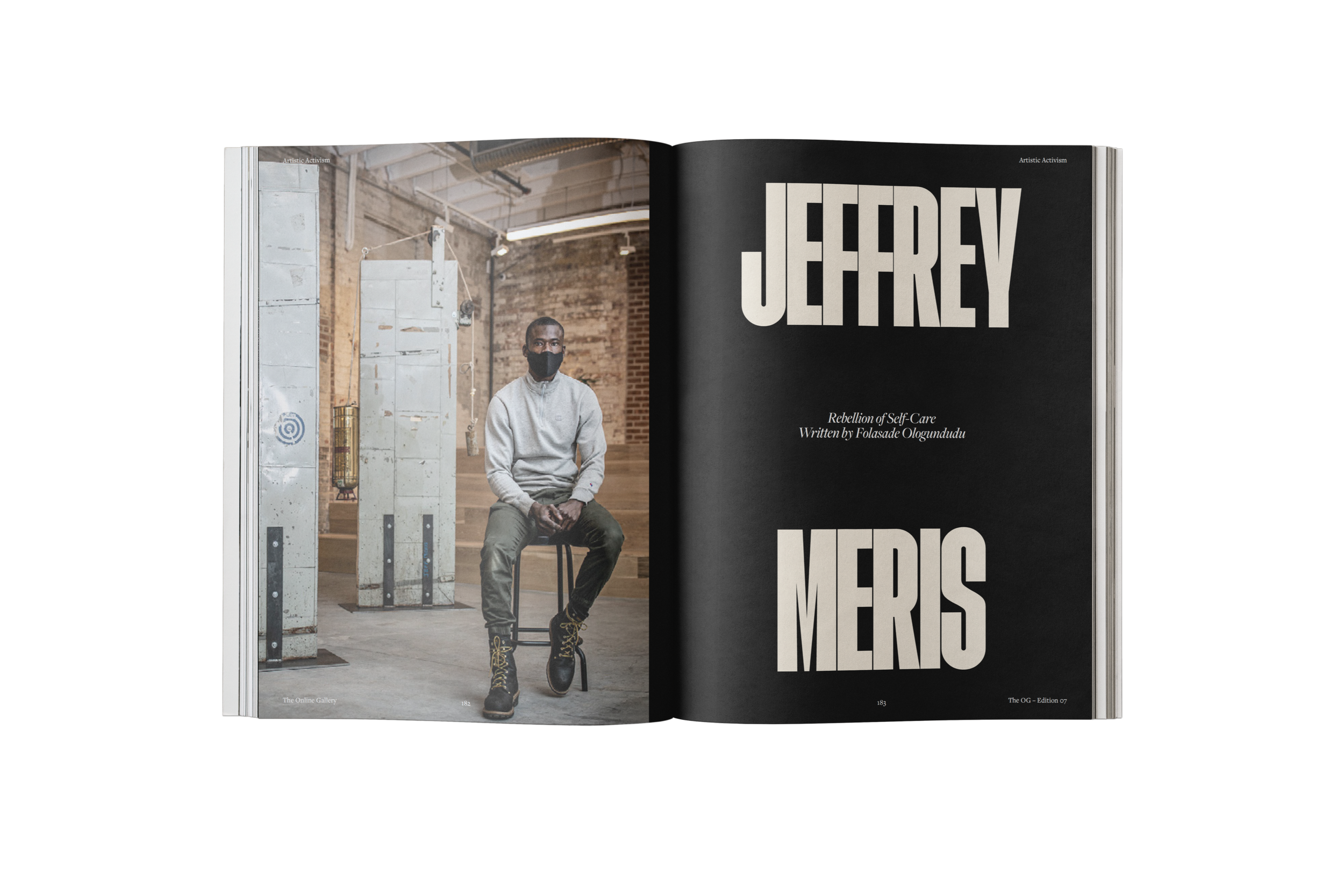Edition 7
Artistic Activism
In a world marred by the twin obscenities of injustice and inequity, how does creative work promote visions of dignity for all? In The OG’s Edition 7, we turn to artists and visionaries who intersect activism and creative work in new and provocative ways. Their work asks us to rethink the relationship between the creative world—long seen as a private, elite sphere—and the public. In what ways do creatives bridge this gap? Or do they work as though there is no gap to bridge—that artistic production and activism can be one and the same? The legendary Black poet June Jordan famously wrote that “poetry is a political act because it involves telling the truth.” Edition 7 celebrates that lineage in the visionaries who are telling the endlessly difficult truth in acts of brave, artistic activism.
Front & Back Cover Artwork By: Hank Willis Thomas
FEATURED
FEATURED
Eddie
Arroyo
Eddie Arroyo's paintings are arresting - both in content and style. Born and raised in Miami, one of his paintings features a sign that says "The community is watching." In turn, Arroyo watches his community. Lily Hamlyn speak to the artist about how his art observes and centers moments of organized action calling for an end to oppression, and the state-sanctioned violence that often follows. Through his paintings, Arroyo casts a clear eye on the sins of institutions (the police, empire, real estate developers, etc.), and how communities act to resist exploitation. In his own career, he questions what it means for an artist to participate in institutions that are responsible for harm.
Lindsay
Adams
Lindsay Adams' art concerns itself with "full humanhood," exploring the possibilities of depicting Black personhood beyond the binary extremes of trauma and joy. In her interview with Meredith Shepard, Adams says, "to reduce anything that’s not trauma to joy doesn’t give room to the nuance—outside of that, I’m kind of in a place of full humanhood, the nuance. I’ve been calling it being black and being at peace." The activism in her art is in the expansion of imaginative possibilities, a lesson on simple existence as a way of resistance.
Sheldon
Scott
Sheldon Scott's performance art is gruelling and revealing. Ranging from exhibitions of labour (hulling a grain of rice between his fingers from sunup to sundown) to leisure (laying in a hammock for eight hours), Scott's art is an interrogation on how neither can be neutral when one is Black, living in the shadow of violent exploitation and enslavement in the United States' past and present. In this feature, he talks about rejecting ideas of valorized overwork that has been so celebrated amongst Black communities, while acknowledging the fact that the right to leisure is something Black individuals have to fight for as a constant practice.
Blue light
Junction
At the Blue Light Junction in Baltimore, artists and cultures are coming together to work on a single medium: Indigo dye. In this feature, Lili Hamlyn speaks to Kenya Miles from the Blue Light Junction about providing a space to learn and explore natural dyeing techniques, drawing from traditions all across the world, from Ghana to Korea to draw out endless reams of vibrant blue cloth. They hope to build a community around the art, even as they grapple with questions about knowledge-preservation within marginalized communities and histories of harm that come with something as unassuming as dye.
Rewind
Collective
Rewind Collective is a digital arts coalition working to address inequalities of gender and minorities. Working as an entirely anonymous collective, their work centers the women and individuals from marginalized communities, reinterpreting them with the aesthetics of modern digital art, and channeling a portion of the sales to charities working against gender-based violence. In this Q&A with Autumn Breon, the Rewind Collective speaks about their involvement in NFTs, working to disrupt, and the guiding principles behind their work.
Nate
Lewis
Nate Lewis draws on his previous experiences as a nurse in a surgical unit, stripping down organic bodies in various states of motion. Woven with images of detailed cellular structures, organs, and tissues, his art takes the diagnostic and scientific to the realm of of surreal artistry, confronting the viewer with the invisibilized biological proccesses taking place all around us. Stripped down to the cellular level, the art paradoxically asks us to reconsider the overarching structures that govern our world. "Nate Lewis’s representational revisionism is rooted in considering the real body — its poses, circulatory systems, vulnerable locations — and the broader political and cultural effects it produces," writes Max Levin.
Abby
Pucker &
Zoe Lukov
Zoe Lukov and Abby Pucker speak to Anna Krauthamer and Meredith Shepard about curating and operationalizing their "Skin in the Game" exhibition in Chicago. Having already taken place in April 2022, Lukov and Pucker reflect on putting together a show that pays respect to, and that is inclusive of, the local community, taking into consideration everything from the welcome desk reception to the artists included. The art featured is an examination of belonging - in skin, in bodies, communities, and history.
Soufside
Featuring: Dee Dwyer, Chris Pyrate, Keyonna Jones and Ronald Moten
Locals call Ward 8 of Washington D.C. "Soufside." It is a place where the roots of the city's history run deep, building a resistance to the encroachment of gentrification. Kalila Bohsali writes, "For artists in D.C., protecting the Soufside is about sustaining a deep history, and many artists in the ward see themselves simultaneously as creators and archivists." Bohsali speaks to four keystone individuals working to organize for the wellbeing of the community: Chris Pyrate ("muralist, designer, and creative director"), Dee Dwyer ("a record keeper, a history maker" working with photography), Keyonna Jones ("a painter, tattoo artist, photographer, and muralist"), and Ronald Moten (renowned activist, Go-Go historian, gang peace-broker, and author).
Hank Willis
Thomas
“I think all art is activism. To create is an act. and if you create intentionally, you're an activist. I am of the mindset that anything that tells us of the world that's made by someone else is a form of activism," says Hank Willis Thomas in his conversation with Autumn Breon. Indeed, the monumental scale of Thomas's art is inspired and guided by the various forms of public art that have characterised activism of the past few decades, such as the AIDS Memorial Quilt. Thomas and Breon both belong to the Wide Awakes artist collective, taking inspiration of the 1860s group of the same name. They speak about building art on a foundation of "creative collaboration and radical love," and Thomas's most recent installation addressing gun violence in the U.S.
Antonio
Gibson
Antonio Gibson of the Washington Commanders rushed over 1,000 years last season, but that's the least surprising thing about his career so far. Anthony Gilbert writes: "[Gibson] entered the league when COVID-19 shut down every institution around the globe. His foray into the league was met with challenges the world had never seen before. His skillset and versatility make him a viable weapon on the field. He sums up the past 2-seasons with, "when I got that first paycheck from signing cards...I never saw money like that in my life... then I would say the first year, I didn't experience it because of COVID...we had no fans, my second year...walking out that tunnel and feeling the energy of the crowd, like everyone is into the game and it's the best feeling ever.""
Lindsey
Brittain
Collins
Lindsey Brittain Collins' artworks are often marked with surprising mundanity - swatches of blue painter's tape. Symbolizing community members of housing sites Collins' has photographed, the blue tape is areminder of the artist's time watching the real estate industry at the Columbia Buisness School "dehumanize entire communities in the name of profits while under the guise of reform and equality." Many of Collins' artistic projects are collages that use images from architecture and construction planning. They demand a closer look at the histories of oppression that undergird the "development" of city infrastructure, always so deeply tied with activist movements resisting exploitation.
Yashua
Klos
Referencing the rigid, grid-like structure that forms the basis of many cities in the US (and indeed property-ownership in the US as a whole), Yashua Klos's early artworks are often an exploration of how organic forms interact with the unrelenting uniformity of grids. More specifically, they explore "all the ways that the Black body adapts to injustice, a constant injustice in the environment.” The breaking of the grid is a resistance, the bending of the unnatural straight lines as a persistence. He speaks to Meredith Shepard about reenvisioning the presence of Black individuals in history and resisting the convention of depicting of Black people at labour.
Liz
PLANK
Liz Plank is a Canadian journalist, activist, author, and podcast host that has been working on feminist organising for over a decade. For Issue 7 of The OG Magazine, she speaks to Mimi Diamond about staying strong through the choppy waters of feminist organising in the current age, her book - For the Love of Men: From Toxic to a More Mindful Masculinity - and the work that cis men must do to dismantle the hold that the patriarchy has on us all. Plank's career is one of optimism in the face of unimaginable adversity.
Paul
Stephen
Benjamin
"If the color black had a sound, what would it be?" This is the question Paul Stephen Benjamin asks himself on a near-constant basis. Benjamin's art interweaves audiovisual material centered around Blackness - Think: The sound of a typewriter spelling out the words "Black is Beautiful," flashing images associated with the letters B, L, A, C, K, and various articulations of the color. Max Levin writes: "The color black is a source inspiration for Paul Stephen Benjamin’s work, which radiates out from this balance of aesthetic and sociopolitical experimentation."
Jeffrey
Meris
Born in Haiti and raised in The Bahamas, Jeffrey Meris builds his multidisciplinary artworks around questions of what it means to not belong. "Meris’s works have included kinetic sculptures, large-scale installations housing flora and vegetation native to The Americas, and “paintings” made from the cloth used to clean rust from his metal sculptures," writes Folasade Ologundudu for Issue 7 of The OG Magazine. They speak about xenophobia against Haitian in The Bahamas, racist violence against Black people in the US, and how Meris has learned to invest in care as a resistance to continued harm.

